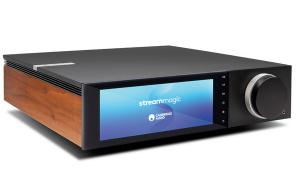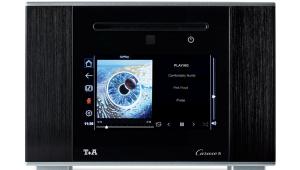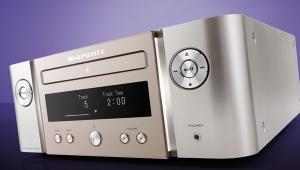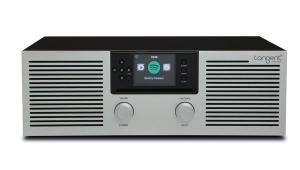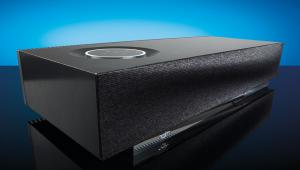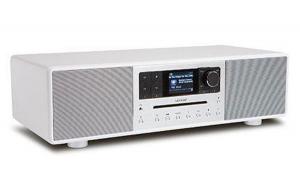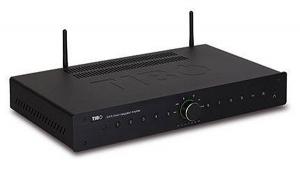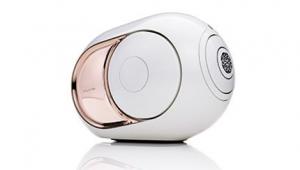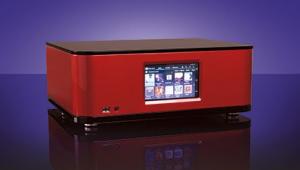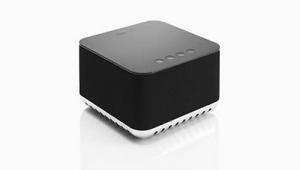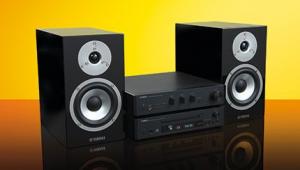Sony HAP-S1 - £800
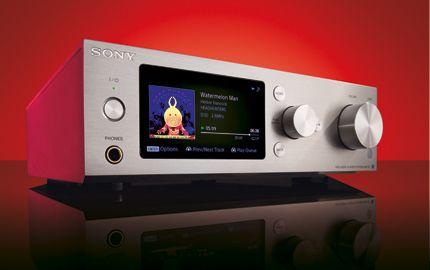
It can be difficult to predict format trends, and even consumer electronics giants can be caught off guard, but a new range of hi-res music machines sees Sony make a welcome return to the hi-fi arena. Things got difficult back in the late nineties, when MP3 files began to replace Compact Disc. The company’s instinct had always been to maintain control of the entire music recording and replay chain, from record company to format to player. But for once, this great innovating consumer electronics group was caught on the hop. The next generation of music listeners wanted their content free and easy – and certainly not tied to anyone’s hardware. Belatedly, Sony responded with its range of ‘Network Walkmans’ running the ATRAC format, but it was like trying to push water uphill – the world wouldn’t listen. History tells us that just a couple of years later, Apple seized the opportunity and wrested the whole shebang from Sony’s grip with the iPod in 2003 and then iTunes three years subsequently.
Now though, Sony is back with a subtle but clever evolution of the digital music player. This can only be a good thing, because when it can be bothered the company can indeed do magic. First announced at IFA in 2013, the new HAP-S1 high-resolution music player sets out to give easy access to high-quality digital music in a sleek, one-box package. It has a 500GB hard drive built in, and so forms the heart of a large music library – and importantly it has clever new software that lets you transfer your music library from your Mac or PC with ease.
There’s more. The new Sony doesn’t just play FLAC and Apple Lossless (ALAC) files at the normal resolutions, plus all the other lower quality compressed file formats further down the chain (AAC, etc), it also supports PCM up to 24/192 and the latest incarnation of DSD. In short, it’s the first affordable ‘music jukebox’ that can genuinely claim audiophile credentials.
This isn’t the first hard-disk drive-based music player, as many will well know. We have already seen a slew of such devices appear on the market. Philips was one notable example of a company that dabbled with this idea, then gave up. Cambridge Audio and Yamaha also discontinued their HDD players, and moved to network music streamers instead. In fact, the closest thing in existence to the HAP-S1 is the Brennan JB7, which is an altogether less audiophile proposition, as we shall see…
Sony is serious about its new one-box system, having resisted the temptation to use cheap, low current consumption, high power Class D power output modules. Instead, it has stuck with Class AB operation on sound quality grounds. Its power amp is of dual mono construction, and is said to have extended bandwidth to exploit hi-res audio sources, up to 100kHz. It’s mounted to a commendably sturdy chassis of 3mm thickness aluminium, and a low-noise cooling fan is fitted. This sits on eccentric insulators, made from rubber of specially chosen hardness.
The HAP-S1 sports a low-loss EI ferrite core power transformer, and careful attention has been paid to earthing, with a single ground point and high-strength epoxy glass circuitboards said to be twice the thickness of rivals. Trick power supply capacitors are fitted, selected for sound quality, the company says, as are carbon resistors. Special signal switching relays are fitted in lieu of semiconductor switches. Overall quality of construction is excellent considering the price and the type of product it is.
Air playing
Before you use the Sony in earnest, you’ll have to hook it up to your home broadband network; there’s a choice of wired or wireless, with a built-in antenna for the latter – no nasty stubby plastic masts hang out from behind. Migrating music from your computer is done via Sony’s HAP Music Transfer software (downloadable from the Support section of the Sony Europe website), which runs on Windows or Mac and automatically copies all your tunes to the HAP-S1’s hard drive via your home network. Usefully, it does this in the background, so I am able to play music from the hard drive, or any other source while it dutifully downloads my many files.
Being a hard disk-based system, it gives instant access – there’s no lag between the track you choose and when it starts playing. Also, you don’t get dropouts as it isn’t subject to network glitches, and your computer can remain switched off while you’re playing music. I find that it works so well in practice that I’m surprised more manufacturers haven’t done it. My only observation would be that it would be great to be able to record directly from an analogue source, so that you can archive your LPs or tapes too. But you can, of course, record LPs on your computer, which the Sony will automatically copy then play.
The S-1 features Sony’s Digital Sound Enhancement Engine, which is designed to make low bit-rate files sound more palatable, and to “restore missing data from compressed audio”. In truth, though, it does not do precisely this – rather, it guesstimates what should be in the upper part of the audio band, and also what was in the tail end of the waveform that was chopped off by the MP3 or AAC compression algorithm, and adds it to the music file. A nice feature to have, but ideally audiophiles should stick with the original hi-res music files rather than trying to magic them better via clever DSP!
Sony products are always models of ergonomic excellence, and the HAP-S1 is no exception. The large right hand volume knob is easier to use than an up/down button, and the selector knob to the left works well with the colourful display. In use, it is easier to operate than any network music player – it functions more like an ‘instant CD player’ than a computer audio product, old school and none the worse for it!
Sound quality
Auditioning starts via its analogue and digital line inputs, to gauge the amplifier section. This proves to have a smooth, detailed sound that is nicely animated – although tonally slightly thin on Freeez’s Southern Freeez via LP. There is also some splashiness to the treble and some lack of air and space, although it is pleasant enough. The digital input is better, with a cleaner and more open sound, one that is very enjoyable in its way. It proves to be fun with a big-hearted, animated sort of character, and gets on with the job in a satisfying manner. The HAP-S1 also features a built-in internet radio tuner, using vTuner, and this works well, despite the depressingly low bit-rates used by the broadcasters. Still, it’s fine for background music and handy extra functionality.
Moving to the delights of the unit’s internal hard drive, it serves up the best sound I’ve heard so far from some of my hi-res PCM files; Wings’ Band on Run is very detailed and clean, with lots of atmosphere and a natural rhythmic flow. Dynamics are good, and when fed with beautifully rich source material such as Kate Bush’s Snowflake in 24/96, it gives a fine account of Kate’s piano work. REM’s Texarkana at 24/192 is great fun, with oodles of power and impressive dynamics. With hi-res files it makes a very nice noise then, but you are always aware of a slightly opaque midband, and a sense of the music being processed.
Dropping the bit-rate down provides a chance to try the unit’s DSEE facility; a 256kbps MP3 of Jon and Vangelis’ I Hear You Now is nice enough. With the Sony system switched off, the HAP-S1 catches the track’s warm and fluffy sound, and makes a decent enough job of the rhythms too. Switched on, it really does improve things, adding some air and space to the hi-hat cymbal work; the bass sequencing is more distinct and tuneful, and the lead synthesiser line carrying the melody has better resolved leading edges. Jon Anderson’s voice is a little less muffled, but fractionally brighter and more sibilant, however. Overall, I feel this to be a worthwhile facility, especially on lower bit-rate MP3s, although contrary to what Sony might claim, it’s not able to make a sonic silk purse out of a sow’s ear.
The best I hear the HAP-S1 sounding is via DSD. Miles Davis’ So What, from Kind of Blue, is a joy. There is a great sense of space, a nice natural swing to the rhythms and a lovely lustre to the trumpets. The Sony also manages
to summon up a decent sense of the depth of the recorded acoustic – which I know to be a very capacious thing. Instruments are fairly well placed in the soundstage, although there’s never really a sense of them being nailed to the furniture in your listening room. This is fair enough though, considering the relatively low price of the unit, and all in all it is a solid performer.
Conclusion
Five years or so ago, the brave new world of computer audio grew up into hi-fi separates with hard-disk drives inside. Products from companies like Brennan, Cambridge Audio and Yamaha offered instant playback of computer files from standalone boxes. Then streamers appeared, and the whole industry began to rally around this model. Sony’s HAP-S1 (and its bigger HAP-Z1ES brother) are the first to elegantly combine the two technologies, giving the best of both worlds. It works rather like a 21st century CD jukebox, offering instant music, and plenty of it – but it seamlessly integrates with your computer and its music library via your home network. In my view, this is a brilliant solution.
The Sony HAP-S1 is a special product then, offering an impressively easy and pleasant user experience, allied to excellent build and finish, flexibility and decent sonics. At £800 it’s not going to be the greatest sounding system around, but is good at the price, and its rivals can’t offer anywhere near the same functionality. Indeed, it’s quite an audacious little product, showing a Sony Corporation back on the front foot. Life has just got a little bit more interesting
LIKE: HDD storage; software integration; versatility; build and finish
DISLIKE: No HDD recording; no USB digital input
WE SAY: Lovely little hi-res playing package; easy to use and fine soundingpackage; easy to use and fine sounding
DETAILS
PRODUCT Sony HAP-S1
ORIGIN Japan/China
TYPE One-box system
WEIGHT 5.8kg
DIMENSIONS (WxHxD) 265 x 88 x 304mm
FEATURES
• 500GB hard-disk drive (expandable via USB)
• DSDIFF(DSD), DSF, MP3, WAV, WMA, AAC, FLAC, ALAC, ATRAC, AIFF support
• Quoted power: 40W RMS per channel (4ohm)
• Headphone output
DISTRIBUTOR Sony Europe Ltd
TELEPHONE 0207 3652413
WEBSITE www.sony.co.uk
 |
Inside this month's issue:
Q Acoustics 3020c standmount loudspeakers, Perlisten R10s active subwoofer, Quad 33 and 303 pre/power amps, Acoustic Solid Vintage Full Exclusive turntable, newcomer Fell Audio Fell Amp and Fell Disc and lots, lots more...
|

